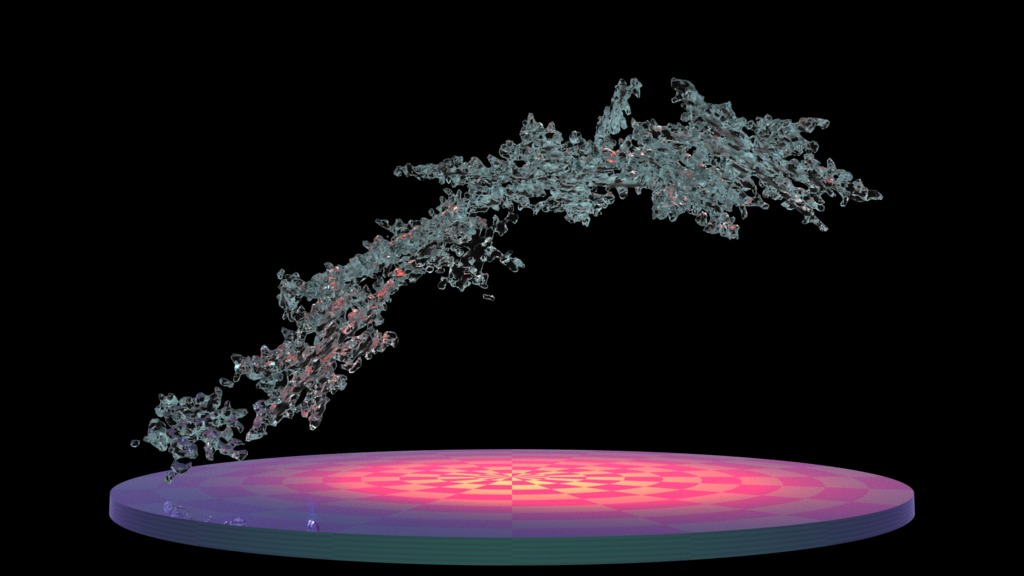Falling Snowflakes Melting Simulation
Simulation of a melting snowflakes tumbling.
These simulated melting snowflakes were based on a smoothed particle hydrodynamics model. Scientists are interested in understanding the microphysics of such events to help improve remote sensing of melting layer precipitation.

Print resolution image of a cluster of snowflakes still in their frozen state.

Print resolution image of a cluster of tumbling snowflakes as water droplets begin to form on their tips.

Print resolution image of a tumbling snowflake cluster as more of the frozen snowflake structure liquifies.

Print resolution image of a few remaining snowflakes nearly encompassed by liquid water.

Print resolution image of the water droplets almost completely formed, with only a few remaining frozen structures left.

Print resolution image of the fully liquified water droplets.
Credits
Please give credit for this item to:
NASA's Scientific Visualization Studio
-
Visualizers
- Alex Kekesi (Global Science and Technology, Inc.)
- Greg Shirah (NASA/GSFC)
-
Scientist
- Jussi Leinonen (JPL)
-
Writer
- Carol Rasmussen (NASA/JPL CalTech)
-
Producers
- LK Ward (USRA)
- Samson K. Reiny (Wyle Information Systems)
-
Animator
- Walt Feimer (KBR Wyle Services, LLC)
-
Technical support
- Laurence Schuler (ADNET Systems, Inc.)
- Ian Jones (ADNET Systems, Inc.)
Release date
This page was originally published on Thursday, March 29, 2018.
This page was last updated on Sunday, March 17, 2024 at 10:49 PM EDT.
Papers used in this visualization
Datasets used in this visualization
-
Smoothed Particle Hydrodynamics Model Method
ID: 998
Note: While we identify the data sets used in these visualizations, we do not store any further details, nor the data sets themselves on our site.
